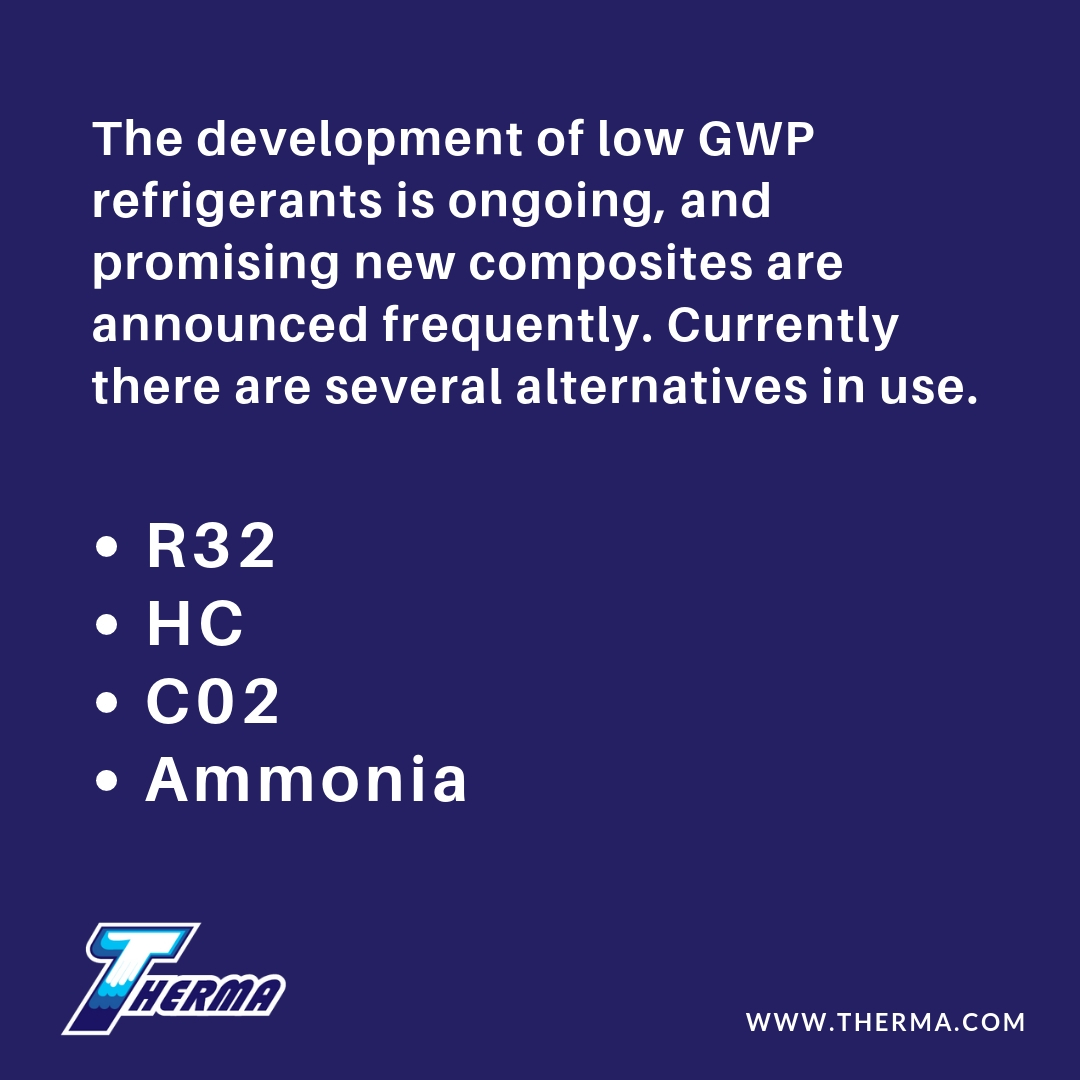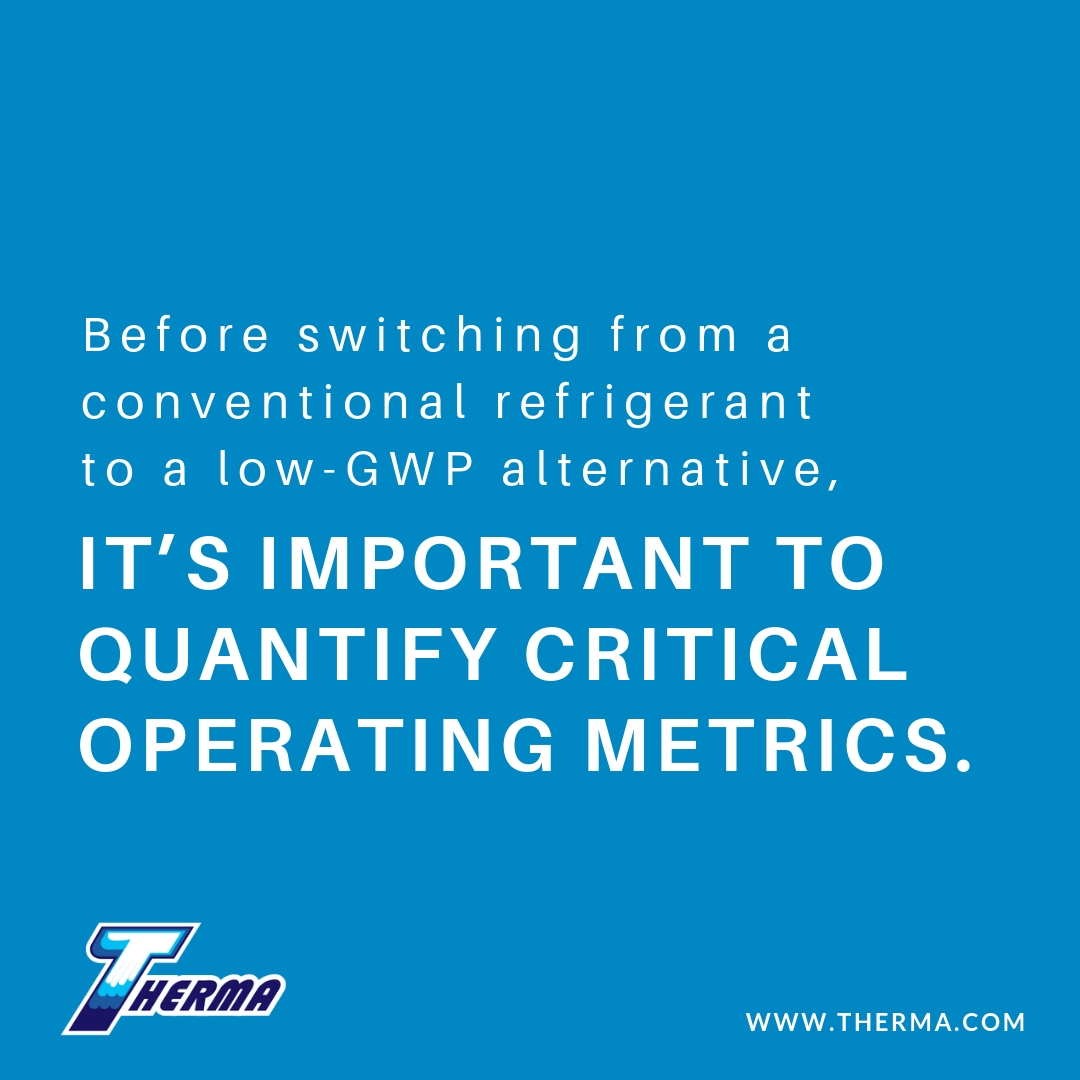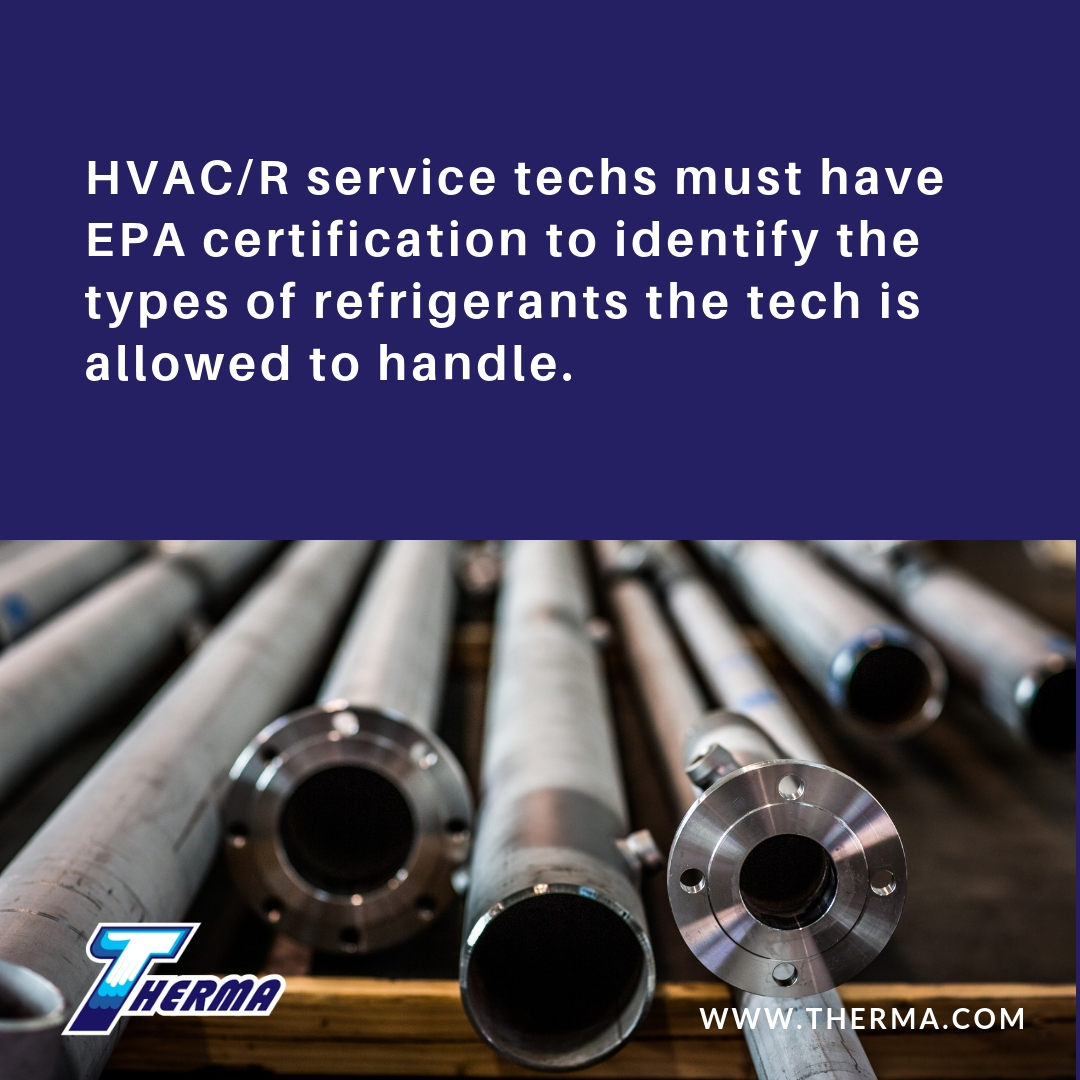Environmental concerns relating to refrigerants were first reflected in actions taken at the 1987 Montreal Protocol.[1] Certain hydrochlorofluorocarbon (HCFC) and chlorofluorocarbon (CFC) refrigerants, including R11, R12, R22 and R23, were phased out when it was determined they had a high ozone depleting potential (ODP). As a result, the HVAC industry gradually introduced hydrofluorocarbon (HFC) refrigerants in the 1990s since they have an ODP factor of zero. Common HFC refrigerants include R410A, R134a, R407C and R404A among others.
A History of HVAC Refrigerants
Unfortunately, many HFC refrigerants contain a high global warming potential (GWP). A refrigerant’s GWP is a calculation based on the greenhouse potency of the gas in relation to carbon dioxide. Specifically, GWP measures how much energy one ton of gas will absorb relative to the emissions of an identical amount of CO2.[2] HFC refrigerants commonly used today have GWP factors that are thousands of times greater than carbon dioxide.
In the late 1990s, scientists began to voice concerns that HFC refrigerants, even with beneficial ODP, contributed to global warming as an unintended consequence. The GWP of this class of refrigerants was soon quantified and became a significant negotiating point in the 1997 Kyoto Protocol.[3] Kyoto set specific guidelines for all greenhouse gas reductions, including HFCs. While the United States is not a current participant in the Kyoto Protocol, awareness of the high GWP of HFCs has led to the aggressive development of alternative refrigerants as both a practical and scientific matter.
EPA Clean Air Act and SNAP
The Environmental Protection Agency (EPA) regulates the use of refrigerants under Section 12 of the Clean Air Act. The agency adopted the Significant New Alternatives Policy (SNAP) in 2015.[4] As it relates to refrigerants, SNAP mandates the phase-out of HFCs in chillers, cold storage warehouses, commercial ice machines, industrial process air conditioning, industrial process refrigeration, non-mechanical heat transfer systems, retail food refrigeration and very low temperature refrigeration by 2024.
In August of 2017, the Court of Appeals for the District of Columbia Circuit vacated the SNAP regulations in the case of Mexichem Fluor, Inc. v. EPA. The court struck down provisions of SNAP “to the extent it requires manufacturers to replace HFCs with a substitute substance.”[5] While the proposed SNAP regulations may have been delayed, few industry analysts doubt they will be re-implemented at a later time. Therefore, refrigerant manufacturers, researchers, scientists and HVAC industry organizations continue to search for suitable alternatives. In many instances, these groups consider the pursuit of low-GWP refrigerants to be a matter of environmental responsibility irrespective of the law.
Low-GWP Refrigerant Alternatives

The development of low GWP refrigerants is ongoing, and promising new composites are announced frequently. Currently, there are several alternatives in use on a limited basis:
- HC (Hydrocarbons): This group consists of refrigerants like isobutane (R600a) and propane (R600a). These materials score well for GWP, toxicity, pressure and availability, but they have flammability issues.
- CO2: C02 refrigerant currently includes (R744). The material has an extremely low GWP, but operates at a peak pressure of 1740 psi, which is significantly higher than the current average peak pressure of 290 psi in HFCs.[6]
- Ammonia: Ammonia refrigerant is available as (R717). While it has a low GWP, ammonia is very toxic and flammable.
- R32: R32 scores well on toxicity, but it is flammable and availability is currently limited.
In addition to the refrigerants outlined above, the industry is working on stable refrigerant alternatives, including unsaturated hydrochlorofluorocarbon (HCFO) and hydrofluoroolefin (HFO). These leading-edge refrigerants are designed to substantially lower flammability or eliminate it altogether.
One of the major initiatives under development is the Low-GWP Alternative Refrigerants Evaluation Program spearheaded by the Air-Conditioning, Heating and Refrigeration Institute.[7] In coordination with equipment manufacturers, academic institutions and leading laboratories, researchers use system drop-in testing, calorimeter testing, heat transfer testing and self-optimized system testing on refrigerants provided by major manufacturers. With minor modifications, it’s believed that the next generation of equipment will utilize these low-GWP refrigerants without a significant loss of capacity or efficiency.
How Low-GWP Refrigerants Affect the HVAC Industry

Switching from a conventional refrigerant to a low-GWP alternative can be confusing and complex. The first consideration usually focuses on achieving the same level of cooling capacity as the current HFC-based refrigerant. Before the change is implemented, it’s important to quantify critical operating metrics
- Will the seals and control system accommodate the refrigerant?
- How much power will be needed to achieve the same level of efficiency?
- Is the system an air conditioner, chiller or cold room?
- What is the current refrigerant in operation?
- What type of compressor is in use?
- Is there an expansion valve?
- What are the evaporating and condensing temperatures?
- What is the superheat and subcooling figures?
- How much will the mass flow rate go up?
Once the data is compiled, your HVAC contractor will consult with the refrigerant supplier to ensure the low-GWP replacement refrigerant is matched to the operating specifications of the equipment. A report is provided that outlines the necessary changes to the system, including power requirements, charge sizes, cooling duty and other essential components.
Low-GWP Impact on HVAC/R Technicians

Under the new guidelines, HVAC/R service techs must have EPA certification in order to sell HFO and HFC refrigerants. In the past, this type of certification was only required for refrigerants containing HCFCs or CFCs. All future low-GWP refrigerants will also require specific EPA certification. As of January 2018, the new certification cards identify the types of refrigerants the technician is allowed to handle under the EPA’s National Recycling and Emission Reduction Program.[8]
Recordkeeping requirements also changed for the disposal of mid-sized appliances as of January 2018. Technicians now must keep records according to the specific time frame and appliance. The refrigerant type must be documented along with the location and time of the recovery. The quantity and variety of recovered and disposed of refrigerant must also be recorded every month.
The Future in a Low-GWP World
It’s important to understand that GWP is not the only measure that should be used to assess a refrigerant’s environmental impact. In addition to the direct impact, the indirect emissions of CO2 from generated electricity used to power the appliance must be considered in any equation that evaluates the effect of a refrigerant on the environment. If you’re interested in exploring environmentally friendly HVAC options, Therma has the experience and expertise to help you select equipment and refrigerants that will reduce your company’s carbon footprint without sacrificing comfort and efficiency.
By William Busse
William Busse has more than 30 years experience in the construction industry in sales, contracting, distribution and manufacturing. He has an extensive background in the mechanical contracting industry, largely from the distribution and manufacturing sides of the business. He has had deep involvement with a variety of large-scale commercial/industrial mechanical contractors, particularly related to value engineering. This includes process piping, high-pressure steam, cryogenics, thermal insulation and commercial/industrial HVAC.
Sources:
- https://www.state.gov/e/oes/eqt/chemicalpollution/83007.htm
- https://www.epa.gov/ghgemissions/understanding-global-warming-potentials
- https://www.sciencedaily.com/releases/2018/08/180814134159.htm
- https://19january2017snapshot.epa.gov/snap/refrigeration-and-air-conditioning_.html
- https://www.federalregister.gov/documents/2018/04/27/2018-08310/protection-of-stratospheric-ozone-notification-of-guidance-and-a-stakeholder-meeting-concerning-the
- http://area-eur.be/sites/default/files/2016-05/AREA%20-%20PP%20Low%20GWP%20refrigerants%20%28110629%29.pdf
- http://www.ahrinet.org/arep
- https://www.refrigerationschool.com/blog/industry-news/2018-epa-refrigerant-regulations-hvac-techs-need-know/
- https://www.honeywell-refrigerants.com/europe/wp-content/uploads/2013/03/honeywell-solstice-l41-lgwp-refrigerants-ac-applications-paper1.pdf
- https://www.achrnews.com/articles/136799-hvac-manufacturers-adopt-low-gwp-refrigerants-despite-hfc-ruling







